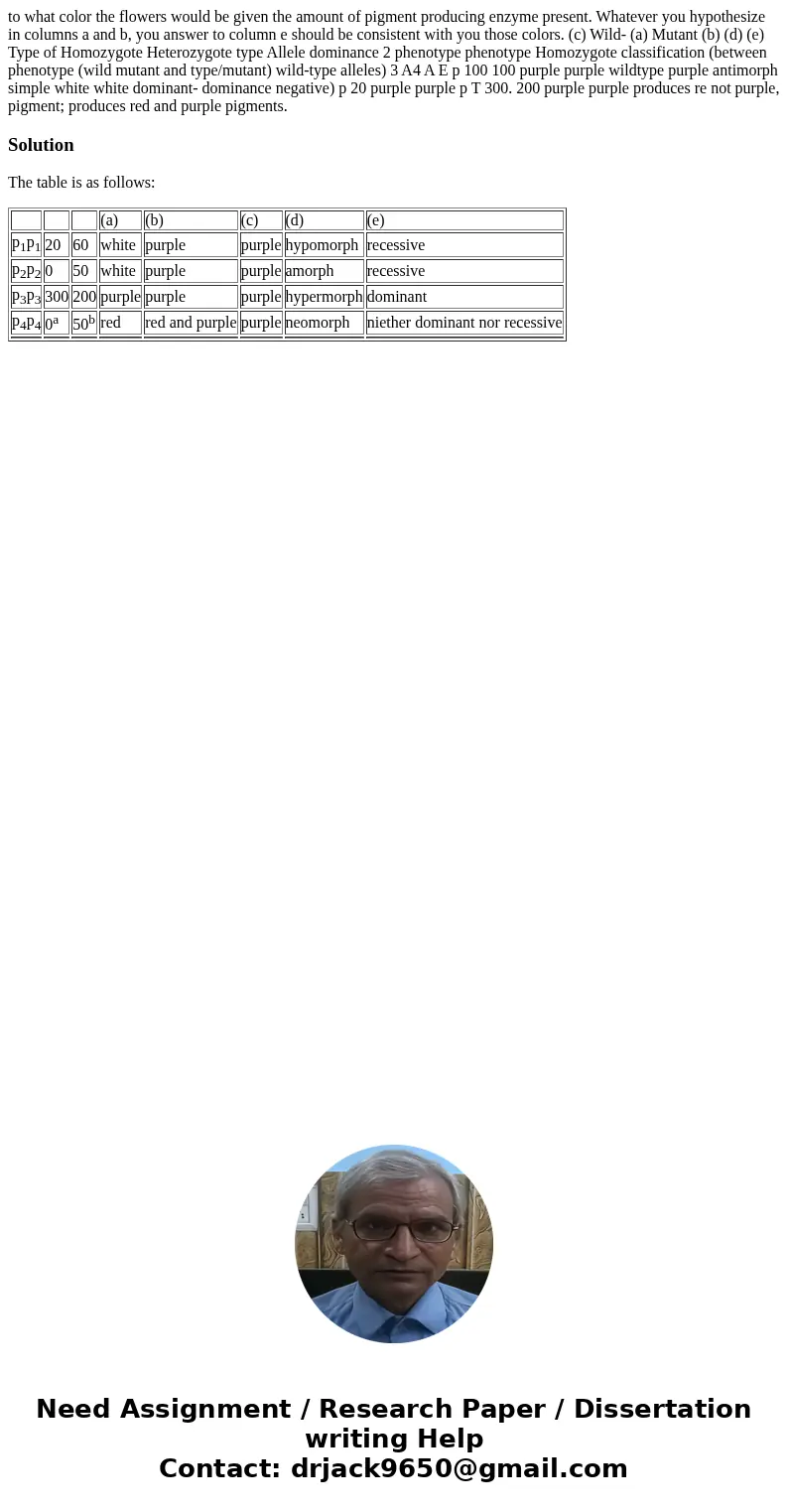to what color the flowers would be given the amount of pigme
to what color the flowers would be given the amount of pigment producing enzyme present. Whatever you hypothesize in columns a and b, you answer to column e should be consistent with you those colors. (c) Wild- (a) Mutant (b) (d) (e) Type of Homozygote Heterozygote type Allele dominance 2 phenotype phenotype Homozygote classification (between phenotype (wild mutant and type/mutant) wild-type alleles) 3 A4 A E p 100 100 purple purple wildtype purple antimorph simple white white dominant- dominance negative) p 20 purple purple p T 300. 200 purple purple produces re not purple, pigment; produces red and purple pigments.

Solution
The table is as follows:
| (a) | (b) | (c) | (d) | (e) | |||
| p1p1 | 20 | 60 | white | purple | purple | hypomorph | recessive |
| p2p2 | 0 | 50 | white | purple | purple | amorph | recessive |
| p3p3 | 300 | 200 | purple | purple | purple | hypermorph | dominant |
| p4p4 | 0a | 50b | red | red and purple | purple | neomorph | niether dominant nor recessive |

 Homework Sourse
Homework Sourse